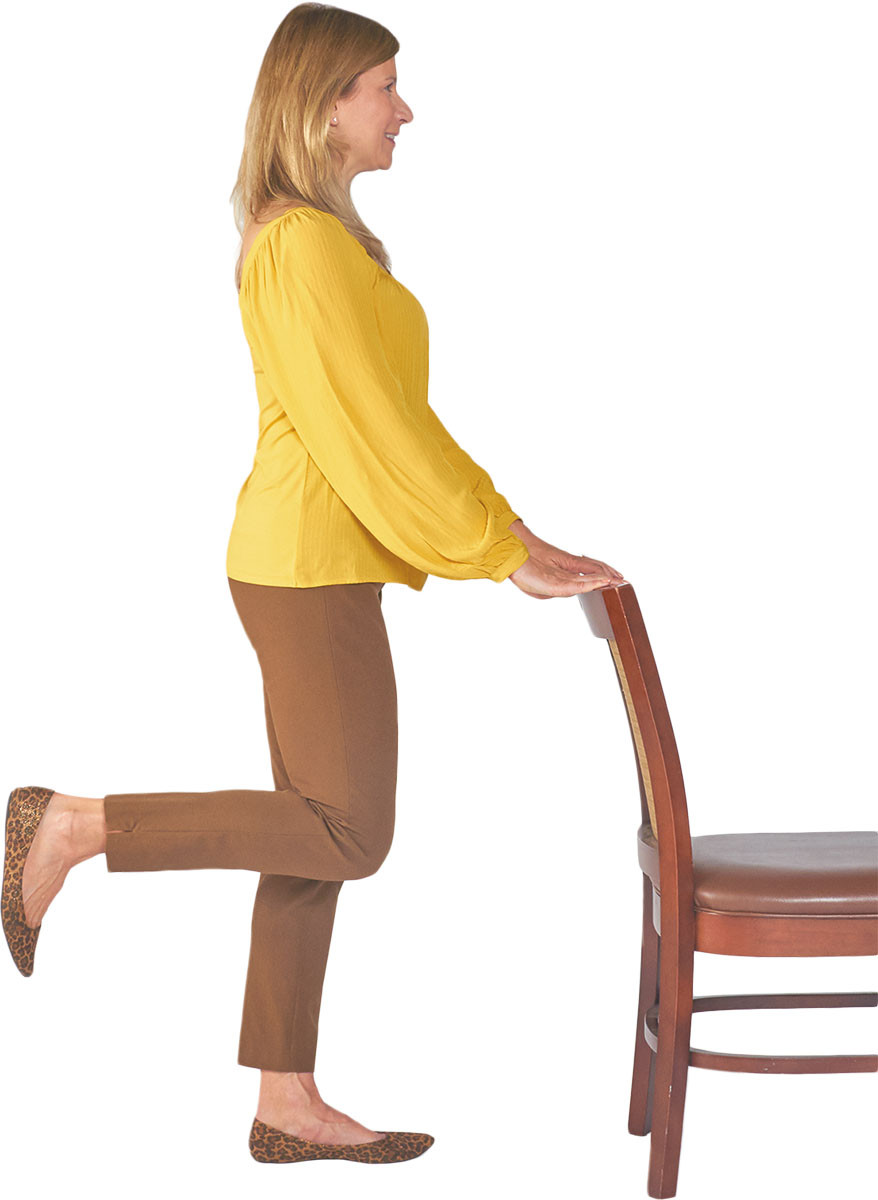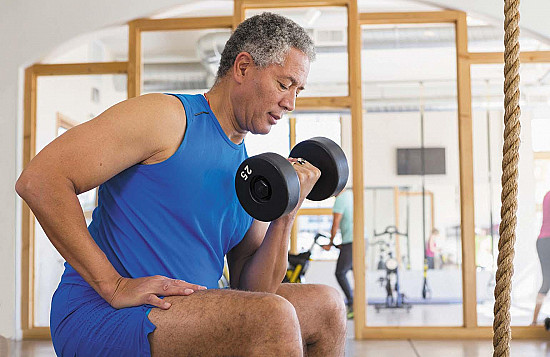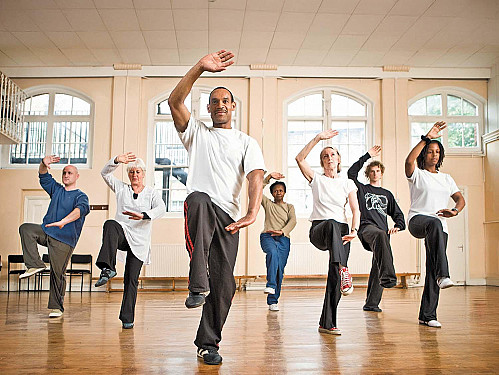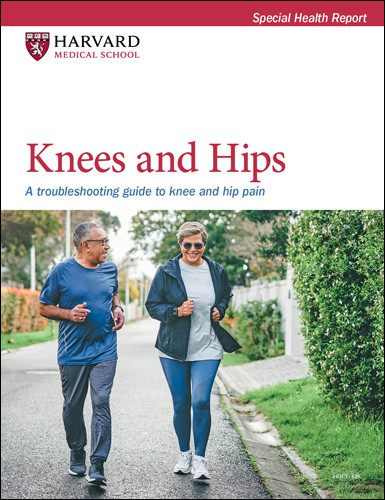Pondering a new knee? Try this as you gear up for the decision
It's not too early to start preparing your body for the possibility of replacement surgery, even if you're just investigating it.
- Reviewed by Anthony L. Komaroff, MD, Editor in Chief, Harvard Health Letter; Editorial Advisory Board Member, Harvard Health Publishing

When you have knee osteoarthritis, you can reach a difficult crossroads. The cartilage that once cushioned the bones in the joint can become so worn, and movement so painful, that it's hard to get around. But the treatment — replacing damaged knee cartilage and bone with artificial parts, followed by weeks of rehabilitation — is a major commitment you might not be ready to make. What should you do?
Don't worry — knee replacement isn't a surgery to rush into. And there are a number of steps you can take as you consider it. Here are some suggestions.
Try a last-ditch pain reducer. A few things may enable you to go a little longer without a knee replacement. One is getting injections of steroids (to reduce inflammation) or hyaluronic acid (to supplement fluid that naturally lubricates the joints). These temporary fixes may (or may not) reduce pain enough so that you can strengthen your leg muscles, which helps absorb pressure you place on the knee and reduces pain for longer periods.
Wearing a medial unloader brace might also help if arthritis damage is on the inside of the knee. "It's a long brace, worn from mid-thigh to mid-calf. It uses force and counterforce to take pressure off the inside of the knee and transfer it to the outside," says Janice McGrail, a physical therapist at Harvard-affiliated Spaulding Rehabilitation Hospital.
These options are available only by prescription, and you'll have to see an orthopedic surgeon or pain management doctor if you're interested.
Modify activities that aggravate knee pain. Some activities are harder on the knees than others. If you're a runner, you might need to switch to walking or using an elliptical machine for aerobic exercise. If going up and down stairs is painful, try taking them one at a time, using this strategy: "When going up the stairs, lead with your good knee, which needs to be strong to pull you up. When going down, lead with your bad knee. The leg that stays on the higher step does all the work to lower you down," McGrail explains.
If kneeling down to clean, garden, or play with grandkids is painful, sit on a small stepstool during the activity.
Lose weight. Every pound of your body weight places 4 to 6 pounds of pressure on the knee. That means losing just 5 pounds can take 20 to 30 pounds of pressure off the joint. But weight loss (if you need it) isn't easy, and it won't last if you try a crash diet. Instead, aim for gradual weight loss with exercise and a healthy diet. Get rid of processed, sugary foods, and eat a diet rich in fruits, vegetables, legumes, nuts, seeds, and lean proteins such as fish or poultry. As we reported in January 2023, eating meals within a certain time window daily — such as eight hours — is associated with weight loss, especially if the window ends earlier in the day (such as 9 a.m. to 5 p.m.).
Exercise more. Among its many health benefits, exercise plays an important role in weight loss and weight control. But knee arthritis can make exercising painful. One workaround is to modify your preferred activities, as mentioned earlier. Another is to do a seated workout (see YouTube for lots of free seated workout videos). In addition, consider exercising in a pool. "You're buoyant in the water, and your knees don't take a pounding. And the pressure of the water helps reduce knee swelling," McGrail says. She recommends swimming laps, running in the pool while wearing a flotation belt, or taking a pool exercise class.
Move of the month: Standing hamstring curl
Stand up straight behind a chair, holding the back of it with both hands. Without moving your right thigh, bend your right knee, bringing your heel up. Pause, then slowly lower your foot to the floor. Repeat 10 times, then do the exercise with your left leg. Photos by Thomas MacDonald |
Seek physical therapy. Physical therapists can tailor a program of cardio exercise, stretching, and strengthening to meet your specific needs. "We can also do some manual therapy on the knee to help it to move better," McGrail says. "And if you do wind up having a knee replacement, you'll want to be as strong and flexible as possible, close to your full range of motion. If your knee is too stiff and weak when you go into surgery, it will be stiffer and weaker afterward, and recovery will be harder."
Get underlying health conditions under control. This is important for your overall health, and it also helps prepare you for surgery. "For example, chronically high blood sugar slows the healing process," McGrail says. "Severe asthma can make it harder to undergo anesthesia safely. Uncontrolled blood pressure may interfere with your ability to get up and be active after surgery." Stabilizing underlying conditions can take time — but time is something you have if you're thinking about maybe getting a knee replacement in few years.
Start doing some research. Find a board-certified, fellowship-trained orthopedic surgeon who specializes in knee replacement (doing hundreds per year), and then make an appointment. Ask if you're a candidate for a knee replacement (you may need x-rays or an MRI to find out). If you are, ask as many questions as you can (see "What to ask about knee replacement surgery"). Call your insurance company to find out which aspects of knee replacement will be covered.
In short, do your homework, take your time, and make sure joint replacement is the right move for you.
What to ask about knee replacement surgeryKnee replacement surgery removes damaged cartilage and bone and replaces it with artificial parts. You might need only a partial knee replacement (on just one side of the joint) or a total knee replacement (on both sides of the joint). Either way, it's a major surgery, and you'll want to learn as much as possible if you're considering the procedure. Here are some questions to ask when you visit an orthopedic surgeon.
|
Image: © Ariel Skelley/Getty Images
About the Author

Heidi Godman, Executive Editor, Harvard Health Letter
About the Reviewer

Anthony L. Komaroff, MD, Editor in Chief, Harvard Health Letter; Editorial Advisory Board Member, Harvard Health Publishing
Disclaimer:
As a service to our readers, Harvard Health Publishing provides access to our library of archived content. Please note the date of last review or update on all articles.
No content on this site, regardless of date, should ever be used as a substitute for direct medical advice from your doctor or other qualified clinician.


















